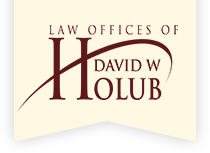Rule of Completeness
I’m Katelyn Holub, an attorney focusing on personal injury law in northwest Indiana.
Welcome to Personal Injury Primer, where we break down the law into simple terms, provide legal tips, and discuss personal injury law topics.
Today’s podcast is inspired by a trial we went through several years ago. In the trial, the defense offered evidence of a diagram that a witness drew following a crash. The diagram was attached to a handwritten statement as to how the collision happened and described who the witness thought was at fault.
The diagram, taken in isolation, was helpful to the defendant. However, the rest of the witness’s statement, in his own handwriting, was entirely against the defendant.
We could have objected to the diagram being introduced into evidence, but we did not. Instead, as soon as the diagram was admitted into evidence, we moved to admit the entire statement of the witness.
Defense counsel objected. Can you guess what happened next?
The judge listened carefully to the defense objection. The judge studied the diagram and the rest of the writing made by the witness.
Then the judge said, “Counsel, I believe the rule of completion requires me to admit the entire document to be fair to the evidence. Objection overruled.”
The rule of completion was formulated under the common law years ago.
It is known today as Rule 106. It reads as follows:
If a party introduces all or part of a writing or recorded statement, an adverse party may require the introduction, at that time, of any other part—or any other writing or recorded statement—that in fairness ought to be considered at the same time.
The purpose of the rule of completeness is to provide context for isolated comments. It avoids misleading impressions that could flow from out-of-context statements.
If the court had allowed the defense to introduce a portion of the statement, the diagram without the context of why it was drawn, then the jury would have received a lie essentially.
The court ruling ensured that the jury would receive the truth, the whole truth, and nothing but the truth.
I hope you found this information helpful. If you are a victim of someone’s carelessness, substandard medical care, a product defect, work injury, or another personal injury, please call (219) 736-9700 with your questions. You can also learn more about us by visiting our website at DavidHolubLaw.com – while there, make sure you request a copy of our book “Fighting for Truth.”

Recent Comments